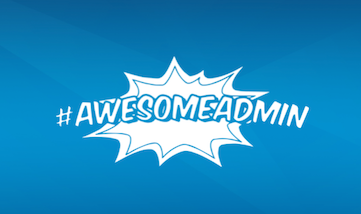“Can you spend an hour or two getting so-and-so up to speed on Salesforce”? I would have to say that sentence is my number two pet peeve next to “Can you dump this in Salesforce?”. But that aside, what do you do when you need to swap out Admins or bring a new Salesforce Admin […]

When it Comes to Training, Begin at the End
You’ve configured your objects, loaded your data, and assigned your permission sets; your Salesforce org is ready to go. Now it’s time to train your users and share all the exciting things Salesforce has to offer. But so often, this message gets lost in translation and you find yourself with sub-par adoption and a disengaged user base. As an admin who’s encountered both success and challenges in this area, I’ve learned that it’s best to begin with the end in mind; end user, that is.
What’s in it for me?
Start by answering the question on everyone’s mind: “what’s in it for me?” One of the ways to do this is to fully understand your users’ role(s). I’ve found it helpful to map out their business process in a separate tool, then parallel the steps in Salesforce to that existing business process. If the move to Salesforce is improving the process, use a method like value stream mapping to highlight those changes. This will enable users to clearly understand the purpose and benefit behind the tool, and make the transition less unfamiliar and ambiguous.
Deliver powerfully
Once you’ve solidified your content, deliver it powerfully. When you have your users’ attention, it’s tempting to pack in as much new and exciting information as possible. However, doing so may not be the best approach. According to instruction specialist Abreena Tompkins, “physiologically, your neurons are keen and alert for no more than 20 consecutive minutes”. Consider delivering bite-size learning, a process known by instructional designers as “chunking”. Chunking content is proven to increase engagement, meet the needs of modern-day learners, and achieve better results.
Training beyond implementation
Finally, ensure that your training efforts continue beyond implementation. While training may be one of your priorities, it’s competing with many other responsibilities in your users’ lives. Go into the training sessions expecting to set a foundation, and planning to build on that foundation in the weeks and months ahead.
I recommend doing so in two ways; first by establishing a network of Salesforce champions. To establish your champion network, identify users in each region and department that are willing to get extra training and act as additional points of contact. You can leverage the champions to provide regional support, hold personal training sessions, and reiterate training concepts. With the abundance of free resources such as Trailhead, it’s easy for your champions to sharpen their Salesforce skills.
You can also provide supplemental training by creating weekly content based on end user feedback. Scan your community for cases, Chatter posts, and questions from users to obtain ideas, then turn them into training material. I’ve found that simple screen capture tools are a great way to easily create short videos that your users can view at their own pace. Sending out weekly content keeps Salesforce front of mind and provides a way for users to learn new skills. In addition, you can reuse these materials to quickly onboard new users and answer frequently asked questions.
Training is a powerful tool that can make or break the success of your Salesforce implementation. Creating training centered on your users will improve their experience, and ultimately, your Salesforce implementation.




